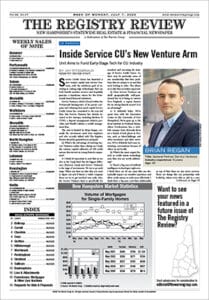
With Baby Boomers and others staying longer and longer in their homes, the share of listings that will need major repairs could soar. iStock photo
Tracking market shifts and identifying new opportunities is one of the basics that never goes out of style. While most Realtors only focus on what is going on in the single-family market, tracking what is happening in the investment side of the business can be a rich resource for locating new ways to grow your business.
I recently interviewed Kurt Carlton, the president and co-founder of New Western, the largest marketplace for investors who want to flip, rehab or invest in housing. The company currently has 165,000 investors on its site, did $2 billion in revenue last year and sells one home every 10 minutes.
While residential real estate typically turns to companies like Attom Data, CoreLogic and Redfin, New Western analyzes the data with an eye to the investment market.
New Western’s recent survey of their users uncovered three hidden trends that virtually no one is discussing. Capitalizing on these trends can give you a huge competitive edge in your market.
Institutional Buyers ‘Fallen Off the Map’
After reading Redfin’s report from 4th quarter 2022 showing that investment purchases were down by 50 percent, Carlton was convinced that Redfin’s data didn’t provide the complete picture. When New Western surveyed their membership to see if this was the case, Carlton and his colleagues were shocked by what they found.
Purchases by the major iBuyers, REITS and institutional landlords were down by 90 percent. In contrast, individual investor market share was through the roof as the independents reclaimed the market.
From 2020 to 2022, investors were also competing with the neighbor down the street. The condition of the house didn’t make any difference because homebuyers were so desperate to purchase. Today, this is no longer the case as days on market are much higher.
The sentiment among investors who answered New Western’s survey was optimistic and upbeat, Carlton said. They were happy about being in a less competitive environment.
For those who are flippers, the markets have loosened to the point where they can now risk adjust and find good deals.
Challenges Coming Soon
Carlton raised an issue that no one else seems to have addressed: the large percentage of homes that were built 20 to 40 years ago. He believes that we’re moving into the “great renovation” where there will be approximately 25 million homes that will need repairs to the major systems in the home. This can include roof problems that can lead to mold. Plumbing issues can be especially difficult if they have to jackhammer the slab to fix the problem.
“That’s not something a typical homebuyer, someone who has inherited a home, or even what a Realtor wants to do with their client because we all know what it’s like dealing with contractors – at the end of the day, everybody hates each other,” Carlton said.
Carlton believes that this market segment will soon represent approximately 20 percent of the listings on the market. Both Realtors and consumers will have to adjust to dealing with major system repairs in one out of every five listings.
At the same time, this also opens opportunities for people who want to make this their business.
“Actual rehabs are very local,” Carlton said. “This is a story about individuals and small businesses really stepping up and fixing a major problem in the United States right now. I think the prospect of becoming a real estate investor that does this full time is becoming very, very realistic. This is when it goes from being a TV show, to a real occupation.”
Real Estate Now ‘Passion Project’ for Many
The people who are going to fix the problems noted above are individuals, not the government or the technologists. New Western’s research has shown that many younger people are looking at fixing up properties as a creative outlet.
A second group who are active in this market are investors between 50 and 60 years of age who are putting aside properties to generate income when they’re in their 60s, 70s, and 80s.
“Somebody who has some business chops, they’ve been in corporate America, but wanted more. I don’t mean money – they want control of their life,” Carlton said. “[Many are] these corporate refugees who jump out. We see a lot of husband-and-wife teams, and it’s something they can do together, even if the ROI isn’t through the roof. They just love the challenge.”
Many are also looking at creating multi-generational wealth. They begin by flipping to make income, and then they start to accumulate rental properties along the way.
“As a Realtor, there’s just fewer transactions and it’s harder to make money. But if you’re a real estate investor, the fundamentals are good for the next 10 years,” Carlton said. “One of the top five problems we have in the United States right now is the lack of housing inventory. You want to go where the problem is, and where you have a unique skill set to solve it.”
Bernice Ross is a nationally syndicated columnist, author, trainer and speaker on real estate topics. She can be reached at bernice@realestatecoach.com.

